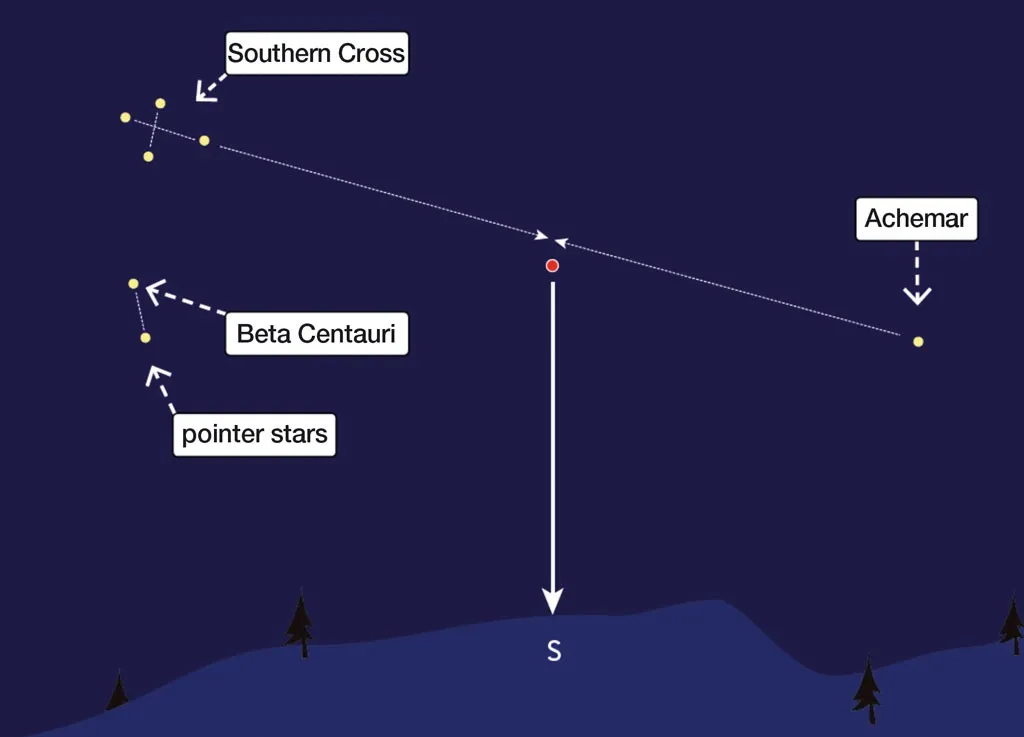Navigating by the stars, or celestial navigation, is a time-honored method used by explorers and sailors for centuries. By understanding the night sky, you can determine direction and position without modern tools. This guide provides a straightforward approach to star navigation.
- Understand the Basics of Celestial Navigation
Celestial navigation involves using the positions of celestial bodies—like stars, the sun, and the moon—to determine your location and direction. The Earth’s rotation causes stars to appear to move in circular paths around the celestial poles. By identifying specific stars and constellations, you can find cardinal directions and estimate your position.
- Identify the North Star (Polaris)
In the Northern Hemisphere, Polaris, also known as the North Star, is a reliable indicator of true north.
- Locate the Big Dipper (Ursa Major): Find the “bowl” of the Big Dipper; the two stars at the end of the bowl point directly to Polaris.
- Find Polaris: Follow the line created by these two stars about five times the distance between them to locate Polaris.
- Determine Direction: Once you’ve found Polaris, you’re facing true north.
- Use the Southern Cross in the Southern Hemisphere
In the Southern Hemisphere, the Southern Cross (Crux) helps determine the south direction.
- Identify the Southern Cross: Look for a cross-shaped constellation with four main stars.
- Find the Pointers: Two bright stars, Alpha and Beta Centauri, point towards the Southern Cross.
- Determine South: Extend an imaginary line along the long axis of the Southern Cross about four and a half times its length. This point approximates the south celestial pole. Drop a line straight down to the horizon to find true south.
- Determine Your Latitude Using Polaris
In the Northern Hemisphere, the angle between Polaris and the horizon closely matches your latitude.
- Measure the Angle: Use your fist at arm’s length to estimate degrees; each fist-width approximates 10 degrees.
- Estimate Latitude: Count how many fist-widths Polaris is above the horizon to estimate your latitude in degrees north.
- Use Orion’s Belt to Find East and West
Orion’s Belt, a line of three bright stars, can help determine east and west.
- Locate Orion’s Belt: Find the three aligned stars in the Orion constellation.
- Determine Direction: In the early evening, the belt rises in the east and sets in the west. By observing its movement, you can identify east and west directions.
- Practice Star Hopping
Star hopping involves moving from one known star or constellation to another to navigate the night sky.
- Start with Familiar Constellations: Begin with easily recognizable constellations like the Big Dipper or Orion.
- Move to Adjacent Stars: Use the positions of known stars to find neighboring constellations or celestial objects.
- Use Star Charts: Familiarize yourself with star charts to aid in identifying and connecting constellations.
- Understand the Movement of the Stars
Stars appear to move across the sky due to Earth’s rotation.
- Circumpolar Stars: Stars near the celestial poles, like those in Ursa Major and Ursa Minor, never set and rotate around the pole.
- Seasonal Changes: Different constellations are visible during different seasons. Learning these patterns helps in navigation.
- Use a Planisphere or Star Chart
A planisphere is a rotating star chart that shows the visible stars for any time and date.
- Set the Date and Time: Align the date and time on the planisphere to see the current night sky.
- Identify Constellations: Use the planisphere to locate constellations and plan your navigation route.
- Practice Regularly
Regular practice enhances your ability to navigate by the stars.
- Start in Familiar Areas: Begin practicing in areas you know well to build confidence.
- Gradually Explore New Areas: As you become more comfortable, use star navigation in unfamiliar locations.
- Keep a Journal: Record your observations and progress to track improvement.
- Be Aware of Limitations
While star navigation is a valuable skill, be mindful of its limitations.
- Weather Conditions: Cloud cover can obstruct the view of stars, making navigation difficult.
- Light Pollution: Artificial light can hinder visibility of stars.
- Accuracy: Without precise instruments, star navigation provides approximate directions and positions.
By understanding and practicing these steps, you can effectively navigate by the stars at night. This skill not only connects you with ancient traditions but also enhances your outdoor experiences.






